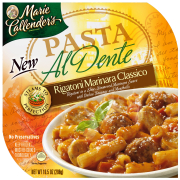‘Best-by’ date-switch conviction reversed
UK packaging to bear recyclability symbols
Study: Dropping prices can hurt brands
ConAgra extends dual-bowl concept
Snickers Dark gets new graphics

by Pan Demetrakakes
Executive Editor
As food-safety scandals continue to mount and government leaders debate how to monitor the industry, several new methods for sterilizing food inside packaging are getting attention.
A Purdue University researcher has devised a method that comprises a set of high-voltage coils that generate a plasma field inside a package, creating ozone inside the package that kills bacteria.
Kevin Keener, an associate professor of food science, says his method uses only up to 40 watts of electricity and raises the temperature inside the package by only a few degrees. It has been tested on spinach and tomatoes, but could conceivably be used on any food in almost any kind of container, Keener says.
A drawback is that unlike most current sterilization systems, this system as currently conceived can only work on one relatively small package at a time. Keener says, however, that he will work on developing a prototype that can work on large quantities of food.
Another method involving electricity was introduced by researchers from Germany’s Fraunhofer Institute for Process Engineering and Packaging at the recent Anuga FoodTec show in Cologne. This method entails putting a food package in de-ionized water, then running radio frequency waves through it to induce heat. The water conducts the energy better than air, allowing faster, more even heating with less power.
The packaging material could be solid like glass, or flexible like plastic film. The only requirements are that it be water-tight and transparent for the radio waves. The German team achieved the best results for solid blocks of food, like tofu or sausage, or jars with liquid or semi-liquid product.
At Michigan State, a team of researchers is studying an X-ray system for food irradiation. The system would use less irradiation than existing systems based on electron beams or gamma rays, which can change the taste of products, especially fat-rich foods like oils or nuts. The Michigan State researchers say they have shown that X-ray systems can kill pathogens like E.coli on ground beef, leafy greens and nuts.
The disadvantage of X-ray irradiation is that it can only treat single packages, as opposed to electron-beam or gamma systems, which can irradiate entire pallet loads. A big advantage is that X-ray units can be operated by food packagers inside their facilities, unlike gamma rays or e-beams, which require food to be shipped to central irradiation facilities.
Rayfresh Foods Inc., Ann Arbor, Mich., provided MSU with a prototype machine.The New York Timesreported that Rayfresh recently landed a contract to build an X-ray machine to treat ground beef for Omaha Steaks.
TOP DEVELOPMENTS
‘Best-by’ date-switch conviction reversedA federal appeals court has overturned a food distributor’s conviction for changing the best-by dates on bottles of salad dressing. Charles Farinella had been found guilty of fraud in a jury trial for buying 1.6 million bottles of Unilever’s Henri’s salad dressing from another distributor, pasting a 2004 “best when purchased by” date over the original 2003 one on the label, and selling them to discount stores. Judge Richard Posner overturned the conviction on the grounds that the dressing is shelf-stable and could be safely consumed well past the best-by date. Posner strongly criticized federal prosecutors in his opinion, saying they had engaged in “improper argumentation” of a “threadbare” case.

Several leading British food retailers have agreed to use symbols on some of their product labels that designate in simple terms how recyclable the packaging is. The program assigns three symbols, all based on a circular arrow, to a package. A green background accompanies the words “widely recycled”; a black background goes with the words “check local recycling”; a black background with a slash through the arrow means “not currently recycled.” Retailers including Tesco, Asda, Marks and Spencer, Sainsbury's and Waitrose have signed on to the program, which is being administered by theBritish Retail Consortium, a trade association for retailers.
Study: Dropping prices can hurt brands
Cutting the price of branded foods and other products, despite seeming like the natural response to bad economic times, can actually hurt consumer perception of the brand, according to a new study from Yankelovich.“Dollars and Consumer Sense”stated that when consumers were asked what they thought when an established brand dropped in price, 70% concluded that it must have been overpriced to start with, and 62% thought it must be priced to move because it’s outdated or about to expire. By contrast, when asked what they would conclude if it did not lower its price, 64% assumed that it must be popular and a good value.

NEW PACKAGES
ConAgra extends dual-bowl conceptConAgra Foods is transferring the packaging technology of its highly successful Café Steamers to some new products in Marie Callender’s, its established line of frozen food. Café Steamers uses a bowl-in-bowl internal package to steam a meal in sauce, which consumers then pour over the food after microwaving. With sales of $95 million in its first year, Café Steamers was the third most successful new brand of 2008, according to Information Resources Inc. ConAgra is using the bowl-in-bowl concept for Marie Callender’s Pasta al Dente, which comes in six varieties of pasta paired with vegetables and/or meat. The Pasta al Dente products retail at $3.49 for a 10- to 11-ounce meal.

Snickers Dark gets new graphics
Snickers Dark from Mars Snackfood US has new graphics that won’t keep consumers in the dark about nutrition. Reinforcing the dark chocolate that enrobes this version of the iconic candy bar, the black wrapper features a light-fixture pull chain and the word “dark” in letters with a neon-style nimbus. The wrapper also bears a Guideline Daily Amount badge informing consumers that the bar has 240 calories, which is 12% of recommended daily intake. The badge is part of an initiative by Mars Snackfood US to put calories and other information on the front panel of packaging.
